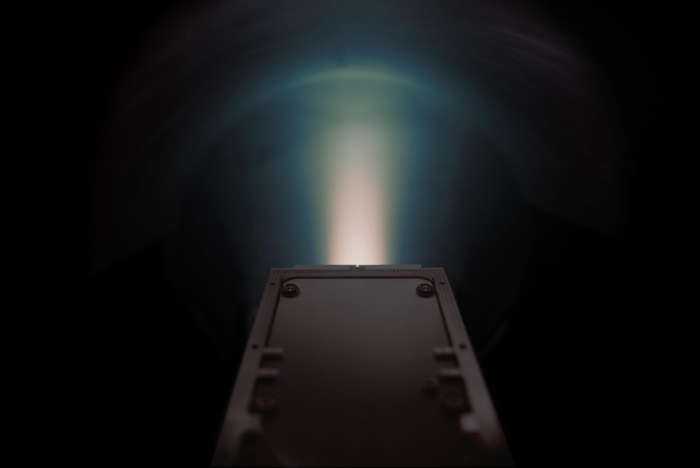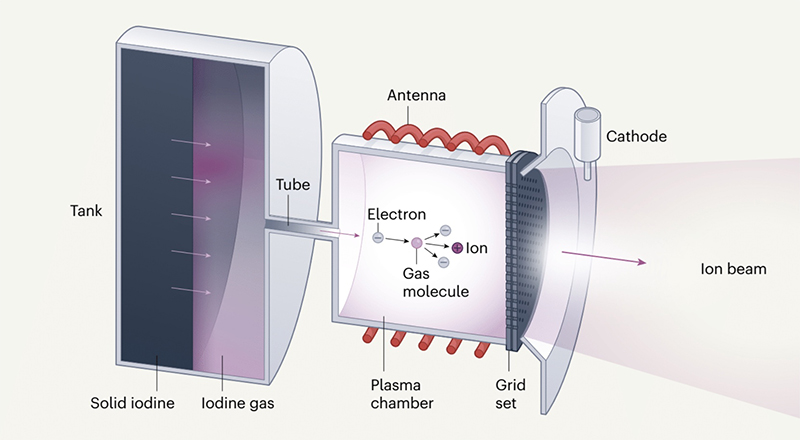For the satellites spinning around Earth, using electricity to ionize and push particles of xenon gets them to go where they need to go. While xenon atoms ionize easily and are heavy enough to build thrust, the gas is rare and expensive, not to mention difficult to store.
Thanks to new research, we could soon have an alternative. Enter iodine.
Full in-orbit operation of a satellite powered by iodine gas has now been carried out by space tech company ThrustMe, and the technology promises to lead to satellite propulsion systems that are more efficient and affordable than ever before.
 The iodine electric propulsion system firing in a vacuum chamber. (ThrustMe)
The iodine electric propulsion system firing in a vacuum chamber. (ThrustMe)
"Iodine is significantly more abundant and cheaper than xenon, and has the added advantage that it can be stored unpressurized as a solid," says Dmytro Rafalskyi, the CTO and co-founder of ThrustMe.
While earlier ground-based tests of iodine propulsion engines had been promising, getting it working in space is the clearest sign yet that this can be the future of small-scale spacecraft engines – and that our exploration of space can practically continue.
The team used iodine to fuel a 20 kg (44 pound) CubeSat satellite with an engine named the NPT30-I2, which was launched on 6 November 2020. Maneuvers were carried out successfully, and iodine was shown to achieve higher ionization efficiency than xenon too.
Besides the benefits we've already talked about, iodine-based systems could also be built in significantly smaller and simpler forms than current satellites: unlike xenon and other propellants, iodine can be stored on board in its solid form before it's converted into a gas, so there's no need for bulky, high-pressure gas tanks.
"The successful demonstration of the NPT30-I2 means we can proceed to the next step in the development of iodine propulsion," says Rafalskyi.
"In parallel with our in-space testing we have developed new solutions allowing increased performance and have commenced an extensive ground-based endurance testing campaign to further push the limits of this new technology."
 The layout of the iodine engine. (Rafalskyi et al., Nature, 2021)
The layout of the iodine engine. (Rafalskyi et al., Nature, 2021)
Tens of thousands of satellites are expected to be launched into orbit across the next decade, so finding ways to make them as efficient and as affordable as possible is key if we're to keep on exploring and analyzing Earth and the Universe around us.
The use of iodine in making satellites more affordable, more efficient and more compact has multiple potential benefits in how satellite constellations can be deployed, trained to avoid each other, and disposed of when they've reached the end of their useful lives.
Challenges remain: iodine is highly corrosive, which means ceramics are required to protect the satellite parts, and at the moment iodine engines aren't as responsive as their xenon counterparts. However, this is a major step forward for the technology.
"Publication of these historic results is not only important for ThrustMe, but also for the space industry in general," says ThrustMe CEO and co-founder Ane Aanesland.
"Having our results peer-reviewed and publically accessible provides the community with further confidence and helps to create a benchmark within the industry."
The research has been published in Nature.
